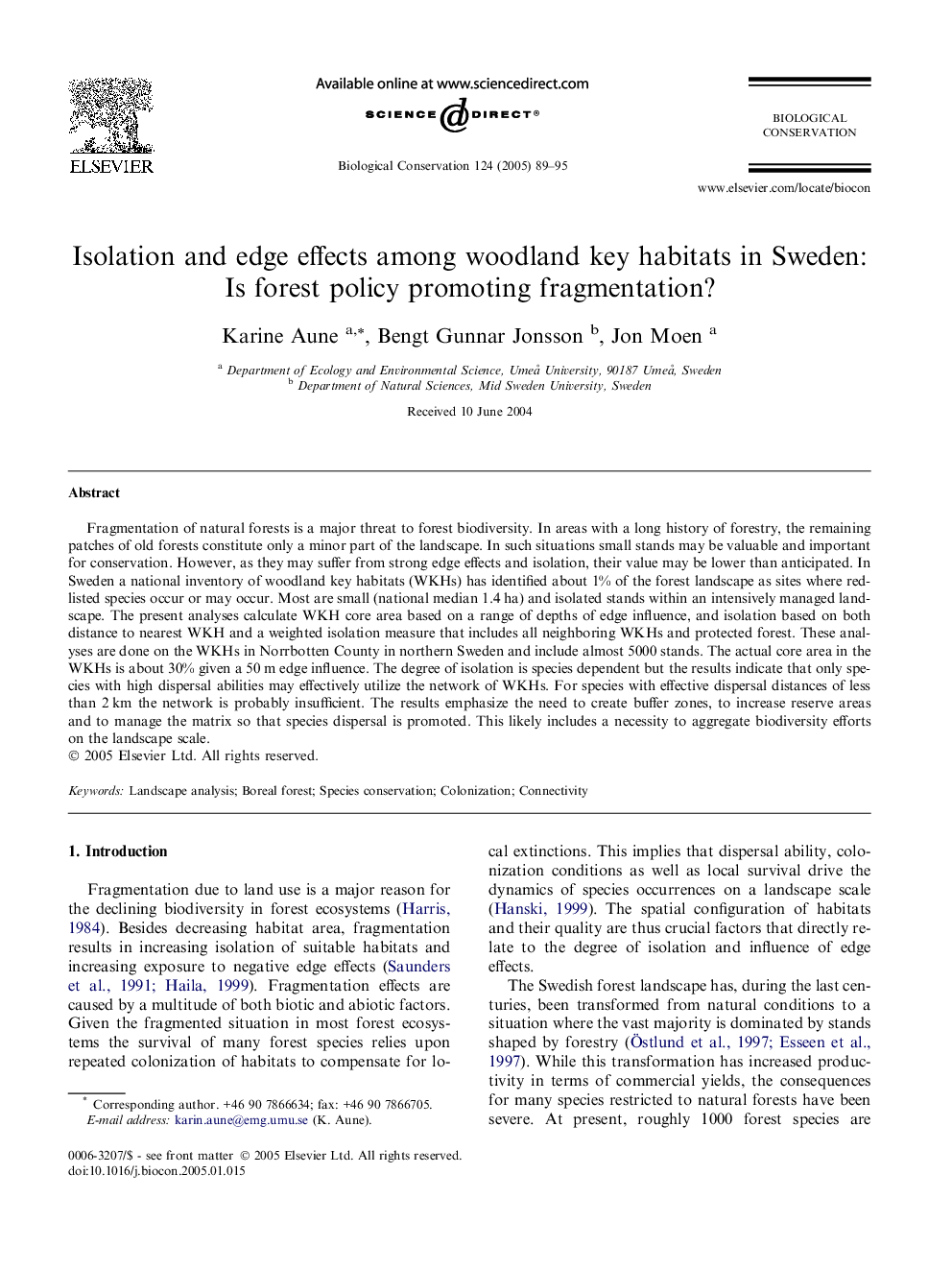| کد مقاله | کد نشریه | سال انتشار | مقاله انگلیسی | نسخه تمام متن |
|---|---|---|---|---|
| 9446050 | 1304644 | 2005 | 7 صفحه PDF | دانلود رایگان |
عنوان انگلیسی مقاله ISI
Isolation and edge effects among woodland key habitats in Sweden: Is forest policy promoting fragmentation?
دانلود مقاله + سفارش ترجمه
دانلود مقاله ISI انگلیسی
رایگان برای ایرانیان
کلمات کلیدی
موضوعات مرتبط
علوم زیستی و بیوفناوری
علوم کشاورزی و بیولوژیک
بوم شناسی، تکامل، رفتار و سامانه شناسی
پیش نمایش صفحه اول مقاله

چکیده انگلیسی
Fragmentation of natural forests is a major threat to forest biodiversity. In areas with a long history of forestry, the remaining patches of old forests constitute only a minor part of the landscape. In such situations small stands may be valuable and important for conservation. However, as they may suffer from strong edge effects and isolation, their value may be lower than anticipated. In Sweden a national inventory of woodland key habitats (WKHs) has identified about 1% of the forest landscape as sites where red-listed species occur or may occur. Most are small (national median 1.4Â ha) and isolated stands within an intensively managed landscape. The present analyses calculate WKH core area based on a range of depths of edge influence, and isolation based on both distance to nearest WKH and a weighted isolation measure that includes all neighboring WKHs and protected forest. These analyses are done on the WKHs in Norrbotten County in northern Sweden and include almost 5000 stands. The actual core area in the WKHs is about 30% given a 50Â m edge influence. The degree of isolation is species dependent but the results indicate that only species with high dispersal abilities may effectively utilize the network of WKHs. For species with effective dispersal distances of less than 2Â km the network is probably insufficient. The results emphasize the need to create buffer zones, to increase reserve areas and to manage the matrix so that species dispersal is promoted. This likely includes a necessity to aggregate biodiversity efforts on the landscape scale.
ناشر
Database: Elsevier - ScienceDirect (ساینس دایرکت)
Journal: Biological Conservation - Volume 124, Issue 1, July 2005, Pages 89-95
Journal: Biological Conservation - Volume 124, Issue 1, July 2005, Pages 89-95
نویسندگان
Karine Aune, Bengt Gunnar Jonsson, Jon Moen,